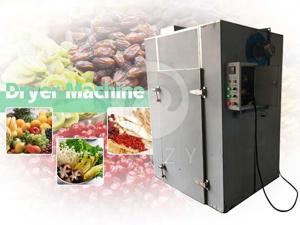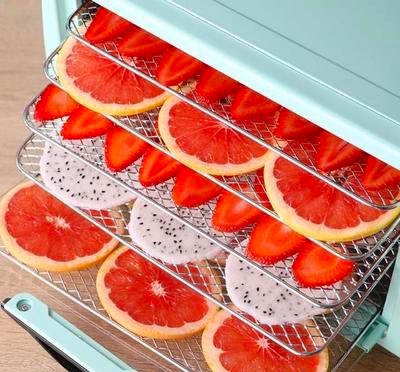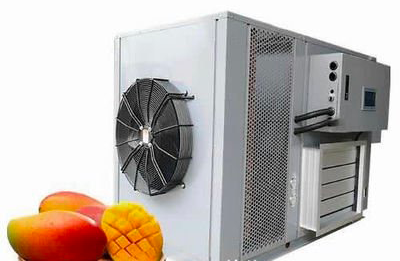
Content Menu
● Understanding Heat Pump Dryers
● Understanding Vented Dryers
● Cost Comparison
>> Initial Purchase Price
>> Operational Costs
>> Maintenance Costs
● Environmental Impact
● Suitability for Different Applications
● Detailed Comparison: Heat Pump vs. Vented Dryers
● How Heat Pump Dryers Work
● Advantages of Heat Pump Dryers Over Vented Dryers
● Disadvantages of Heat Pump Dryers
● Conclusion
● FAQ
>> 1. What is the main difference between heat pump dryers and vented dryers?
>> 2. Are heat pump dryers worth the investment?
>> 3. How much energy do heat pump dryers save compared to vented models?
>> 4. Can I use a heat pump dryer for all types of food?
>> 5. What are the maintenance requirements for each type of dryer?
In the world of food processing, drying is a critical step that ensures the preservation and quality of food products. As a manufacturer of food drying machines, it is essential to understand the various types of dryers available in the market, particularly heat pump dryers and vented dryers. This article will delve into the cost comparison between these two types of dryers, their operational efficiencies, and their suitability for different applications.

Understanding Heat Pump Dryers
Heat pump dryers are advanced drying machines that utilize a heat pump system to remove moisture from food products. They work by transferring heat from the environment and using it to evaporate moisture from the product. This method is highly efficient and environmentally friendly.
Advantages of Heat Pump Dryers:
- Energy Efficiency: Heat pump dryers consume significantly less energy compared to traditional vented dryers. They can operate at lower temperatures, which helps preserve the nutritional value of food.
- Cost Savings: Although the initial investment may be higher, the long-term savings on energy bills can offset this cost.
- Versatility: These dryers can be used for various food products, including fruits, vegetables, and meats.
- Environmentally Friendly: By using less energy and producing minimal emissions, heat pump dryers are a sustainable choice for food processing.
Understanding Vented Dryers
Vented dryers are more traditional drying machines that expel hot air and moisture outside through a vent. They are commonly used in both residential and commercial settings.
Advantages of Vented Dryers:
- Lower Initial Cost: Vented dryers typically have a lower purchase price compared to heat pump dryers.
- Simplicity: These machines are straightforward to operate and maintain.
- Faster Drying Times: Vented dryers can dry products quickly due to their high-temperature operation.
Cost Comparison
When comparing heat pump dryers and vented dryers in terms of cost, several factors must be considered:
Initial Purchase Price
- Heat Pump Dryer: The initial cost is generally higher due to advanced technology and components.
- Vented Dryer: Lower initial costs make them attractive for businesses with budget constraints.
Operational Costs
- Heat Pump Dryer: These machines have lower operational costs due to energy efficiency. They consume less electricity over time, leading to significant savings on utility bills.
- Vented Dryer: Higher energy consumption results in increased operational costs over time.
Maintenance Costs
- Heat Pump Dryer: Maintenance can be more complex due to sophisticated technology but is often less frequent due to durability.
- Vented Dryer: Simpler maintenance requirements but may need more frequent servicing due to wear and tear from high temperatures.
Environmental Impact
Another critical aspect of cost comparison is the environmental impact. Heat pump dryers are more eco-friendly as they use less energy and produce fewer emissions. This can lead to additional savings for businesses looking to reduce their carbon footprint and comply with environmental regulations.

Suitability for Different Applications
The choice between heat pump dryers and vented dryers also depends on specific applications:
- Heat Pump Dryers: Ideal for businesses focused on quality preservation, such as organic food producers or those dealing with sensitive products like herbs and spices.
- Vented Dryers: Suitable for operations requiring quick drying times, such as bulk processing where speed is crucial.
Detailed Comparison: Heat Pump vs. Vented Dryers
To further understand the differences between these two types of dryers, we can look at several key factors:
| Feature | Heat Pump Dryer | Vented Dryer |
| Energy Efficiency | Up to 28% more efficient | Less efficient; higher energy usage |
| Initial Cost | Higher upfront cost | Lower upfront cost |
| Operating Temperature | Lower temperatures (gentler on fabrics) | Higher temperatures |
| Drying Time | Longer drying cycles | Faster drying cycles |
| Installation Flexibility | Can be installed anywhere | Requires external venting |
| Environmental Impact | Eco-friendly; minimal emissions | Higher emissions; less eco-friendly |
How Heat Pump Dryers Work
Heat pump dryers operate using a closed-loop system. Here's how they function:
1. Air Intake: The dryer draws in air from the surrounding environment.
2. Heating: The air is heated using a refrigerant system before passing through the drum containing wet clothes.
3. Moisture Absorption: As the warm air circulates through the drum, it absorbs moisture from the clothes.
4. Condensation: The humid air then passes through an evaporator where moisture is condensed into water.
5. Recycling Air: The now-dry air is reheated and recirculated back into the drum for continued drying.
This process allows heat pump dryers to efficiently remove moisture while consuming less energy than traditional methods[5][6].
Advantages of Heat Pump Dryers Over Vented Dryers
1. Gentler on Clothes: Operating at lower temperatures means that fabric wear is minimized, extending the life of garments.
2. Versatile Placement: Since they do not require external venting, heat pump dryers can be installed in various locations without concern for ductwork or venting requirements.
3. Quiet Operation: Heat pump dryers tend to operate more quietly than vented models, making them suitable for homes where noise levels need to be kept low[8][9].
4. Advanced Features: Many models come equipped with smart features such as moisture sensors that optimize drying cycles based on fabric type and load size[10].
Disadvantages of Heat Pump Dryers
Despite their numerous benefits, heat pump dryers do have some drawbacks:
1. Longer Drying Times: Due to their lower operating temperatures, heat pump dryers may take longer to dry clothes compared to vented models.
2. Higher Initial Investment: The upfront cost can be a barrier for some consumers or businesses looking for immediate savings.
3. Smaller Capacity: Many heat pump dryer models have smaller drum sizes compared to traditional vented models, which may not suit larger households or businesses with high laundry demands[7][9].
Conclusion
In summary, while heat pump dryers have a higher initial cost compared to vented dryers, their long-term savings on energy bills and lower operational costs make them a wise investment for many food processing businesses. The choice ultimately depends on specific needs, including budget constraints, desired drying times, and environmental considerations.
Heat pump dryers stand out as an eco-friendly choice that not only conserves energy but also protects delicate fabrics during the drying process. For businesses focused on sustainability and efficiency, investing in a heat pump dryer could yield significant benefits over time.

FAQ
1. What is the main difference between heat pump dryers and vented dryers?
Heat pump dryers use a closed-loop system that recycles hot air for drying, making them more energy-efficient. In contrast, vented dryers expel hot air outside, leading to higher energy consumption.
2. Are heat pump dryers worth the investment?
Yes, although they have a higher initial cost, their energy efficiency leads to significant savings over time, making them a worthwhile investment for many businesses.
3. How much energy do heat pump dryers save compared to vented models?
Heat pump dryers can save up to 50% more energy than vented models due to their efficient operation at lower temperatures.
4. Can I use a heat pump dryer for all types of food?
Yes, heat pump dryers are versatile and can be used for various food products including fruits, vegetables, meats, and herbs.
5. What are the maintenance requirements for each type of dryer?
Heat pump dryers may require specialized maintenance due to their technology but tend to need less frequent servicing. Vented dryers have simpler maintenance but may require more frequent checks due to higher wear rates.












